With so much that has happened within my identity, and coming to terms with someone I hadn’t known, I have been reading. A lot. I had to do my thing and read the work done on transgender people and the intersection of Christian spirituality.
For decades, I have been mentally and soulfully trying to find the place of peace in sexuality and spirituality. Gender and sexuality are separate aspects of our human lives. Our culture, especially in American Christianity, has forced the two together like peanut butter and transmission fluid on two pieces of tree bark to make a sandwich. In order to grasp my identity and hold my faith together, I read.
This is the list of media and a synopsis and/or reflection on each. Maybe some of you need to find something to grasp and hold identity and faith together. Maybe some of you are shaken by what I have discovered and claimed for myself and just need to know “How” or “Why”. Maybe some of you just want to expand your understanding. May these books serve you in the way that best brings you peace.
I need to begin with what really launched my biggest change. “Let It Go” settled into my heart. It began a string of Disney-originated songs from critical animated movies for my psyche. To hear Idina Menzel the first time sing this and to watch Elsa come out of her isolation and claim herself – I had tears in my eyes. That song stayed on repeat for a while in my mind and heart. Returning to it today, I realize much of that song has come to pass for me. Now if I could just wear that dress like she does.
The next was Moana. The entire movie was a huge messenger for me. It spoke to me about the place of calling, the role of the Holy Spirit, and the face of most of our churches today. But the song “How Far I’ll Go”, the anthem of claiming her vision for the future, reminded me that my calling is not shaped by the fears and limitations of the places I am appointed to serve. My calling is just that: it is a calling to something that is beyond the reef, in the open sea. I’m still wondering how far it will take me.
And then The Greatest Showman was released. I walked out a changed person. I have always considered myself an outsider, a weirdo, a freak. I always claimed it was because I was a nerd and geek. In reality, I knew deep down it was because I was a crossdresser. It was the fear of being discovered, the shame I held for something that truly was defining me.
I watched the overly positive portrayal of P.T. Barnum’s acceptance of his “freaks”. I watched them find a family, acceptance with one another. I knew that there would always be the mobs that wanted to destroy what I felt was good about me. I knew that I would continue to face rejection and fear or misunderstanding. But I had to look at myself differently. And I had to look for others who looked at ourselves differently.
Of course, no mention of The Greatest Showman is complete without the showcase musical piece in that movie. Keala Settle brought that song to the hearts and lives of millions of “freaks” and gave all of us a reason to proclaim “This Is Me” even in the pain of our scars, the faces of our enemies and the roadblocks.
That song was so transformational, I wrote about the intersection of the words of that song and chapter 5 of the Book of Romans in the New Testament.
Okay, on to books. There have been many books over the years that I have always built my life on and around. I started with reading about homosexuality and faith and the Bible. There are tons of books out there. Some are good. Some are bad. My opinion is that if you can’t get to loving and accepting gays by reading the Bible directly, then start with these two books: Homosexuality: A Conversion: How a Conservative Pastor Outgrew the Idea that Homosexuality Is a Sin by Rev. John Tyson and UnClobber: Rethinking Our Misuse of The Bible on Homosexuality by Colby Martin. Both give very earnest efforts to deal with the battleground verses. I call them battleground verses because they are the same territory in the Bible that both sides have laid claim to in clarifying the issue. In the process, the only thing that has been clarified is how much one side hates the other. And I use the word “hate” on purpose. There is no love in most arguments over who has the best transterpretation.
For a more down to earth and relatable approach to the subject of language, I MUST include my friend Stant Litore’s Lives of Unforgetting: What We Lose in Translation When We Read the Bible, and A Way of Reading the Bible as a Call to Adventure. Stant addresses the way that some stories and words and verses have been mistranslated and how they have created the exact opposite climate of how God intended the world to be.
One of my friends from one of my online support groups suggested I read Cheryl B. Evans book, What Does God Think: Transgender People and the Bible. I got it and consumed it very quickly. This is as much an attempt to share relatable approaches to the subject of gender and transgender issues as it is a mother trying to navigate the world-shaking reality that her child is transgender.
That book unlocked a door that led me down a rabbit hole of discovery. The Bible and the Transgender Experience: How Scripture Supports Gender Variance by Rev. Linda Tatro Herzer burst open my eyes to new ways of looking at familiar Bible characters and stories.
Understanding Gender Dysphoria: Navigating Transgender Issues in a Changing Culture is perhaps the most scholarly book I read in this area of discovery. Dr. Mark A. Yarhouse brings the mind of psychology to bear on the subject and presents some of the scientific foundations for transgender experience. He also brings the faith of a more conservative Christian perspective into the dialogue. While it is more scholarly and at times challenging, I believe Dr. Yarhouse is attempting to be fair in developing a path forward in bridging difficult waters of conservative Christian perspectives with transgender persons.
Before anyone accuses me of attempting to pad my nest with affirmative writings, I also read counter-argument writings. Two that stood out were God and the Transgender Debate by Andrew T. Walker and Homosexuality and the Church by Howard A. Snyder. I will not criticize these works because they come from well-meant places of faith and understanding and scholarship. What I found, in reading them from the perspective I now read all things, is I now am standing on one mountain and they are speaking from another mountain. I have visited that mountain. I had a cabin on that mountain. But I have moved. My cabin is now on another peak. I hear them telling me about their view from their perspective. I just can’t see that point of view anymore.
There are two other books that have been extremely helpful. Unashamed: a Coming-Out Guide for LGBTQ Christians by Amber Cantorna is a practical guide for how someone who wants to or is in the process of coming out can navigate the challenges. It also offers helpful guides for family or allies who may be trying to navigate the challenges with their LGBTQ loved ones. It tries to make a connection to the very real needs of those who are struggling to find a place for themselves in a world that seems to turn upside down around them.
The last is Shameless: A Sexual Reformation by Rev. Nadia Bolz-Weber. In her work, the beauty of sex is the creation of God. She also brings to the forefront that the Church may be the place to start new conversations about sex. As someone who believes that sex has been demonized and made shameful by the same people who respect a God who created sex, I believe it is necessary to reclaim the conversation.
I am still finding reading material. There are a lot of emerging thoughts about transgender people. Until there is space for all of us at the table, I continue to read.
Originally posted to:

